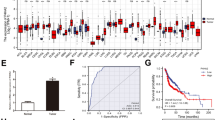Abstract
Objective
To assess the effect of 17β-estradiol(E2) on cell proliferation, cell invasiveness and its regulation of MTA3, Snail and matrix metalloproteinase 2 (MMP-2) expression in the ovarian clear cell adenocarcinoma cell line ES2, and to further investigate the mechanism involved.
Methods
We first investigated expression of ERα, ERβ, PR and E-cadherin of ES-2 cells by RT-PCR and Western blots. Before all experiments, the ES-2 cells were grown in medium depleted of steroid for more than 7 days. Following treatment with 10-7,10-8 and 10-9M E2, cell viability of the ES-2 cells was determined by the MTT method, and the cell cycle distribution and apoptosis were examined by flow cytometry (FCM). Invasion and mobility assays were performed using modified Boyden chambers. MTA3, Snail and MMP -2 mRNA expression was measured by RT -PCR, and Snail, MMP-2 protein levels were determined by IHC. MMP-2 activity was assayed by zymography.
Results
RT-PCR and Western Blots showed that the expression of ERα and E-cadherin mRNA and protein in the ES-2 cells was negative, while ERβ and PR expression was positive. E2 at 10-7,10-8 or 10-9M stimulated cell proliferation. A level of 10-8M E2 reduced the proportion of G0-G1 phase cells and increased the proportion of cells in the S phase, but it had no effect on apoptosis. Invasiveness and mobility of the ES-2 cells was significantly increased by l0-8M E2. Treatment with l08M E2 led to reduced MTA3 mRNA expression, and elevated Snail and MMP-2 mRNA and protein levels.
Conclusion
E2 enhanced invasion by the ES-2 cells. The effects observed maybe mediated by down-regulation of MTA3 and up-reguation of Snail and MMP-2.
Similar content being viewed by others
References
Ho CM, Chien TY, Shih BY, et al. Evaluation of complete surgical staging with pelvic and para-aortic lymphadenectomy and paclitaxel plus carboplatin chemotherapy for improvement of survival in stage I ovarian clear cell carcinoma. Gynecol Oncol. 2003;88:394–399.
Purdie DM, Bain CJ, Siskind V, et al. Hormone replacement therapy and risk of epithelial ovarian cancer. Br J Cancer. 1999;81:559–563.
Zanetta GM, Webb MJ, Li H, et al. Hyperestrogenism: a relevant risk factor for the development of cancer from endometriosis. Gynecol Oncol. 2000;79:18–22.
Batlle E, Sancho E, Franci C, et al. The transcription factor snail is a repressor of E-cadherin gene expression in epithelial tumour cells. Natl Cell Biol. 2000;2:84–89.
Cano A, Perez-Moreno MA, Rodrigo L, et al. The transcription factor Snail controls epithelial-mesenchymal transitions by repressing E-cadherin expression. Natl Cell Biol. 2000;2:76–83.
Yokoyama K, Kamata N, Fujimoto R, et al. Increased invasion and matrix metalloproteinase-2 expression by Snailinduced mesenchymal transition in squamous cell carcinomas. Int J Oncol. 2003;22:891–898.
Fujita N, Jaye DL, Kajita M, et al. MTA3, a Mi-2/NuRD complex subunit, regulates an invasive growth pathway in breast cancer. Cell. 2003;113:207–219.
Holinka CF, Hata H, Gravanis A, et al. Effects of estradiol on proliferation of endometrial adenocarcinoma cells (Ishikawa line). J Steroid Biochem. 1986;25:781–786.
Swan SH. Intrauterine exposure to diethylstilbestrol: longterm effects in humans. APMIS. 2000; 108:793–804.
Fujimura M, Hidaka T, Kataoka K, et al. Absence of estrogen receptor-alpha expression in human ovarian clear cell adenocarcinoma compared with ovarian serous, endometrioid, and mucinous adenocarcinoma. Am J Surg Pathol. 2001;25:667–672.
Nusslein-Volhard C, Wieschaus E, Kluding H. Mutations affecting the pattern of the larval cruticle in Drosophila melanogaster. I. Zygotic loci on the second chromosome. Wilhelm Roux’s Arch Dev Biol. 1984;193:267–282.
Corbo JC, Erives A, Di Gregorio A, et al. Dorsoventral patterning of the vertebrate neural tube is conserved in a protochordate. Development 1997;124:2335–2344.
Chen S, Zhou D, Yang C, et al. Modulation of aromatase expression in human breast tissue. J Steroid Biochem Mol Biol. 2001 ;79:35–40.
Cowley SM, Hoare S, Mosselman S, et al. Estrogen receptors alpha and beta form heterodimers on DNA. J Biol Chem. 1997;272: 19858.
Pace P, Taylor J, Suntharalingam S, et al. Human estrogen receptor beta binds DNA in a manner similar to and dimerizes with estrogen receptor alpha. J Biol Chem. 1997;272: 25832.
Gaub MP, Bellard M, Scheuer I, et al. Activation of the ovalbumin gene by the estrogen receptor involves the fos jun complex. Cell. 1990;63:1267.
Paech K, Webb P, Kuiper GG, et al. Differential ligand activation of estrogen receptors ER alpha and ER beta at API sites. Science. 1997;277:1508.
Author information
Authors and Affiliations
Corresponding author
About this article
Cite this article
Ding, J., Feng, Y., Yin, L. et al. The Effect of 17β- estradiol on invasion by the ovarian clear cell adenocarcinoma cell line ES - 2 and the molecular mechanism involved. Chin. J. Clin. Oncol. 2, 717–725 (2005). https://doi.org/10.1007/BF02819537
Received:
Accepted:
Issue Date:
DOI: https://doi.org/10.1007/BF02819537




